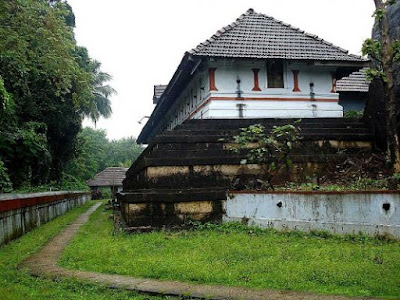 |
| Trikkur Mahadeva temple, Kerala.www.blogger.com |
 |
| Trikkur Mahadeva temple. alayamkanden.blogspot.in. |
 |
| Trikkur-mahadeva-kshetram. Keralatourismeveryone.com |
 |
| Trikkur Mahadeva temple,Kerala. www.tourismeveryone.com |
 |
| Mugha mantap, Mahadev temple. alayamkanden.blogspot.in |
According to the history of this temple, the Shiva linga was first noticed by a person from the untouchable community. The temple was later developed by the Namboodri Brahmin community who had a mantap erected in memory of that man who chanced upon the Shiva Linga. Every year, during festival (Utchav) times, it is on this floor, that Kurathiyattam (Kuravas are supposedly gypsies) is performed. It was here that the linga was sighted, hence the village was named Dhrukpuram. (Dhrushti meaning sight). Over a period of time, the word Dhrukpuram got changed to Trikkur.
Ref:
http://www.tourismeveryone.com
http://aalayamkanden.blogspot.in/2014/12/trikkur-mahadeva-kshetram-come-and-I









